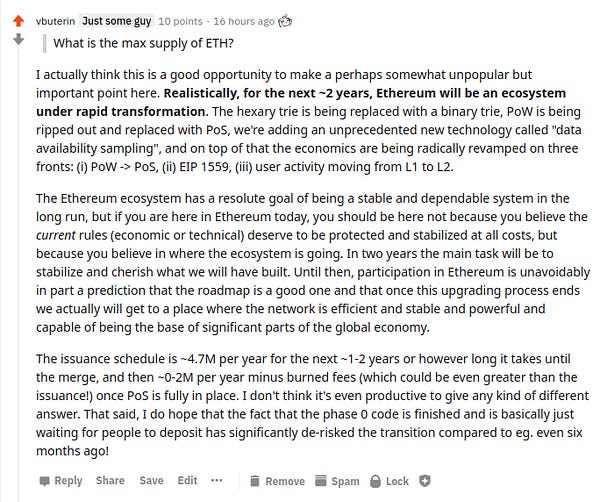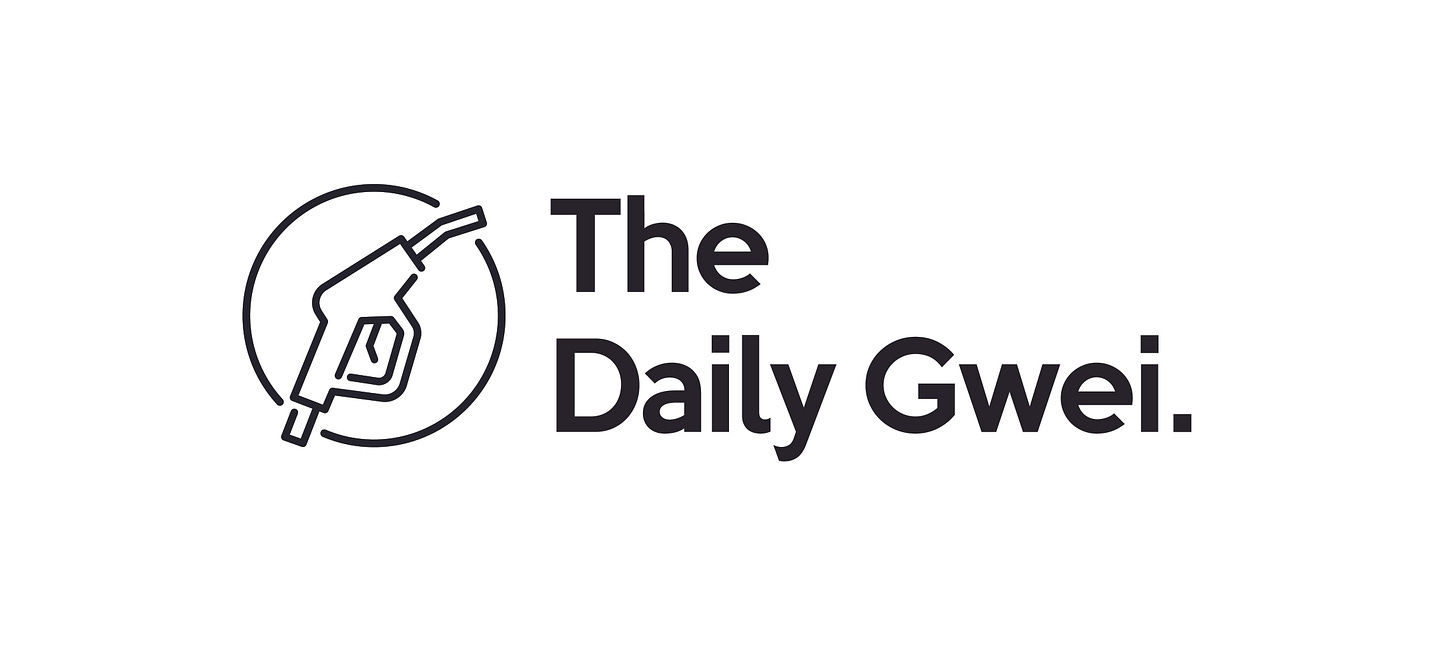Ethereum is an evolving beast - it doesn’t just sit around resting on its laurels. Vitalik put out a good tweet today highlighting one of his comments in the recent eth2 AMA which basically acts as a way to set the expectation around what Ethereum is right now and what it’s going to be in the future.


What Vitalik wrote above is really important and something that I think all Ethereans (and future Ethereans) should understand. Ethereum is not a “finished product” and it has not ossified - the Ethereum protocol will be undergoing some significant changes over the next 2 years with the move from layer 1 to layer 2, the rollout of eth2 and the merger of eth1 into eth2. These changes will effect stakeholders across the entire protocol (users, developers, investors, businesses etc) and there will inevitably be some pain that results from the upgrades being rolled out.
What I also found particularly interesting was that Vitalik was actually replying to a question about the max supply of ETH and, due to the nuance involved in answering this, he decided to give an expansive answer instead of just linking to a block explorer or a script to download. As he states in his reply, ETH’s supply will be affected by a few changes over the next 2 years and understanding that is the critical nuance that most people miss. So the answer is really that ETH is not going to have a max supply - it’s going to be perpetually issued to validators in eth2 (to pay for security) and, if enough ETH is burned once EIP-1559 is implemented, ETH’s issuance can actually go net negative (more on that here).
Lastly, Vitalik touched on the broader goals of the Ethereum ecosystem - that is, the goals to have a stable and dependable system for things to be built upon. We don’t really have a dependable system today as we are still a little while away from being able to service millions of users with no or low fees and fast transactions (this is what layer 2 is for of course). I’d also argue that while the system itself is stable (in that it does what it’s meant to do in some limited capacity), it still suffers from general instability issues when gas prices are high (failed transactions are a plague for end-users) and the eth1 governance process leaves much to be desired. The stability issues are being alleviated with layer 2 systems, EIP-1559 and eth2 (with sharding) while governance is obviously a much harder nut to crack (and not particularly something that can be solved).
Ethereum 2.0 (aka Serenity) has always been the end goal for Ethereum. The original architects were talking about staking and sharding way back in 2014 but they unfortunately underestimated just how long it would take to research and develop the bleeding edge tech that was needed. Though, this is now all part of the eth2 rollout we all know and love (the phases of eth2) and we’re now closer than ever to seeing it all go live.
A little short-term pain for massive long-term gains is fine by me.
Have a great day everyone,
Anthony Sassano
Enjoyed this piece? You can get a fresh one sent straight to your inbox every week day by simply hitting that subscribe button below!
All information presented above is for educational purposes only and should not be taken as investment advice.
Follow and Support Me
Donations (sassal.eth and my Gitcoin Grant)
EthHub (ethhub.eth)




